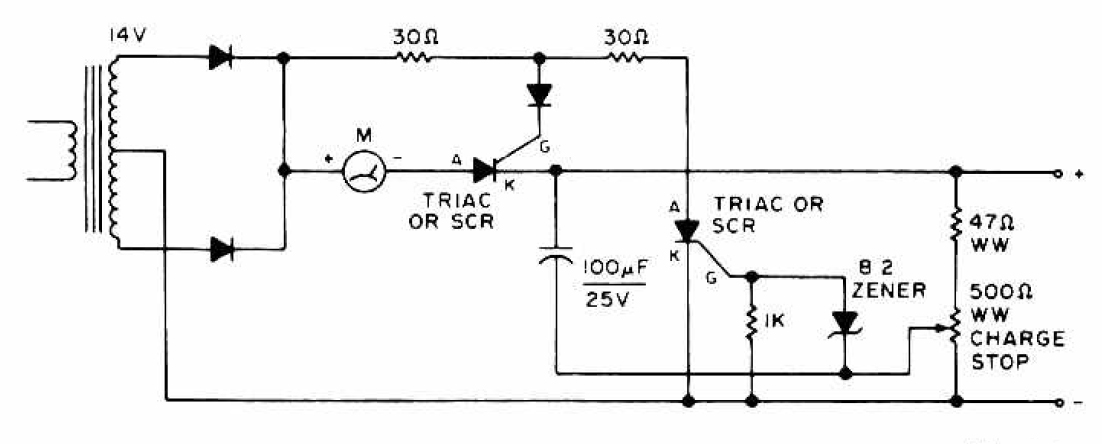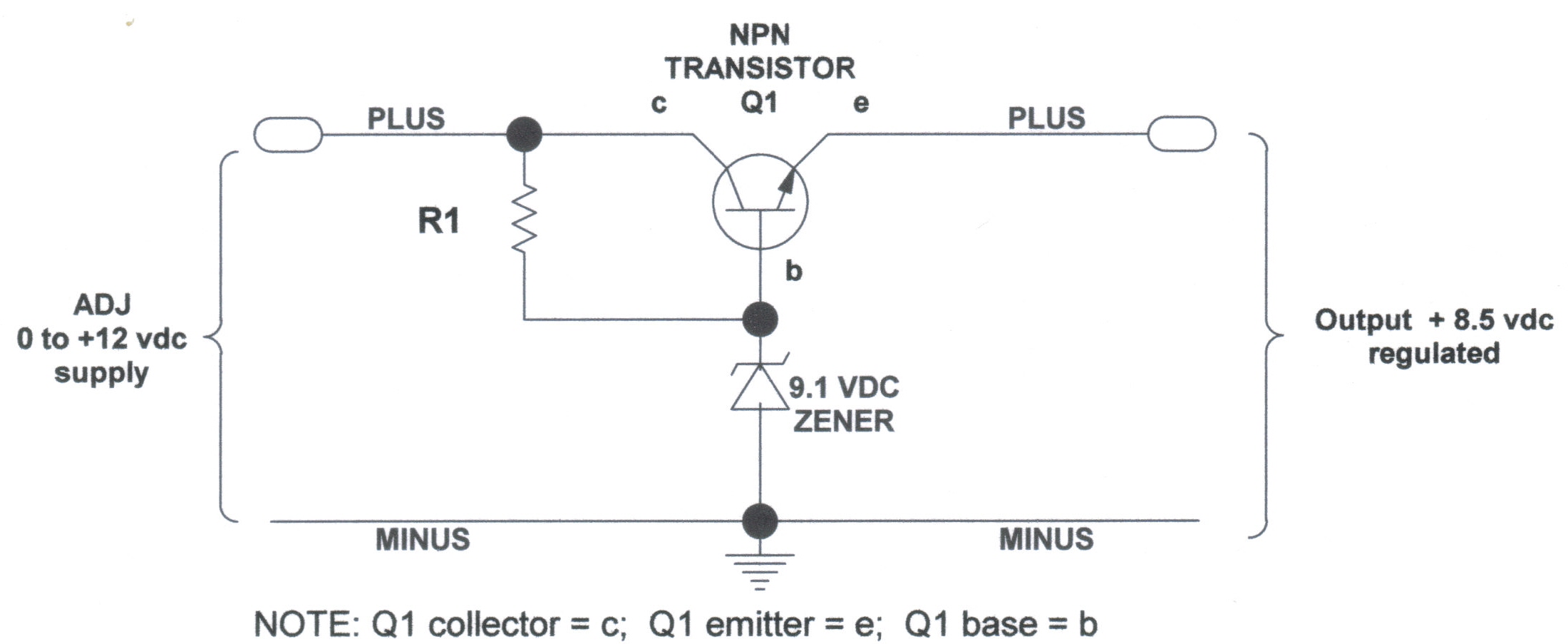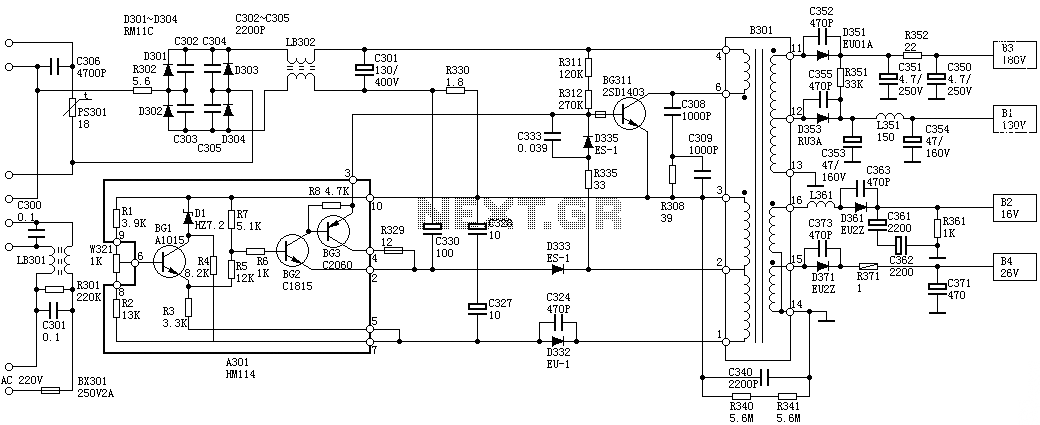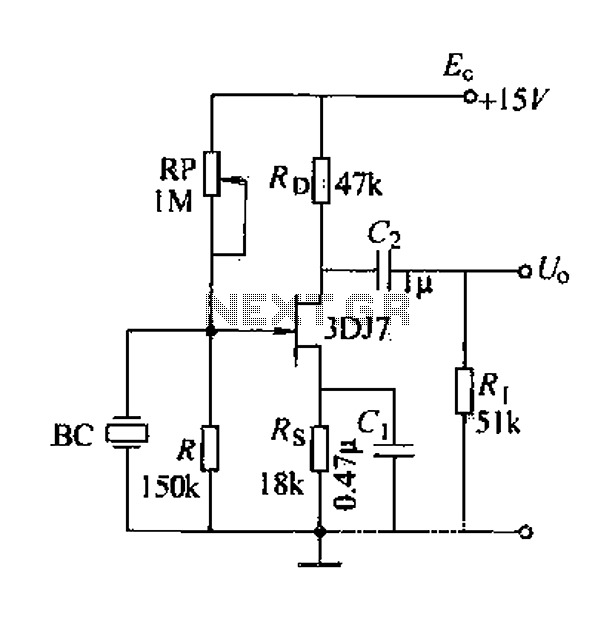
Charger circuit equipped with a regulator circuit output voltage Schematic Diagram

The charging circuit features adjustable voltage output settings, allowing for regulation of the charging voltage supplied to the battery. The use of a potentiometer facilitates precise voltage management, with adjustments possible down to the millivolt range. Refer to the charger circuit diagram below for further details.
The circuit design incorporates a voltage regulator that ensures a stable output voltage suitable for charging various battery types. The potentiometer is connected in a voltage divider configuration, enabling fine-tuning of the output voltage. This flexibility is crucial for different battery chemistries, which may require specific charging voltages to optimize performance and longevity.
The input section of the circuit typically includes a transformer or an AC to DC converter to provide the necessary input voltage. Following this, a rectifier circuit converts the AC voltage to a pulsating DC voltage, which is then smoothed using capacitors to reduce ripple. The voltage regulator, often implemented using integrated circuits such as the LM317 or similar, maintains a constant output voltage despite variations in input voltage or load conditions.
Additionally, the circuit may include protection features such as fuses or diodes to prevent overcurrent situations and reverse polarity connections. An LED indicator can also be incorporated to show the charging status, providing visual feedback to the user.
Overall, this adjustable voltage charger circuit is designed for efficiency and reliability, ensuring safe and effective charging of batteries across a range of applications.The circuit charger is equipped with voltage output settings, so that we can regulate how much voltage to charge the battery. And the settings using the potentio making it easier for us managing voltage up to a mV. See charger circuit below : You are reading the Circuits of Charger circuit equipped with a regulator circuit output voltage And this
circuit permalink url it is 🔗 External reference
The circuit design incorporates a voltage regulator that ensures a stable output voltage suitable for charging various battery types. The potentiometer is connected in a voltage divider configuration, enabling fine-tuning of the output voltage. This flexibility is crucial for different battery chemistries, which may require specific charging voltages to optimize performance and longevity.
The input section of the circuit typically includes a transformer or an AC to DC converter to provide the necessary input voltage. Following this, a rectifier circuit converts the AC voltage to a pulsating DC voltage, which is then smoothed using capacitors to reduce ripple. The voltage regulator, often implemented using integrated circuits such as the LM317 or similar, maintains a constant output voltage despite variations in input voltage or load conditions.
Additionally, the circuit may include protection features such as fuses or diodes to prevent overcurrent situations and reverse polarity connections. An LED indicator can also be incorporated to show the charging status, providing visual feedback to the user.
Overall, this adjustable voltage charger circuit is designed for efficiency and reliability, ensuring safe and effective charging of batteries across a range of applications.The circuit charger is equipped with voltage output settings, so that we can regulate how much voltage to charge the battery. And the settings using the potentio making it easier for us managing voltage up to a mV. See charger circuit below : You are reading the Circuits of Charger circuit equipped with a regulator circuit output voltage And this
circuit permalink url it is 🔗 External reference





